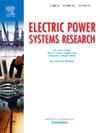基于LSTM和IHOA算法的MPPT控制策略研究
IF 4.2
3区 工程技术
Q2 ENGINEERING, ELECTRICAL & ELECTRONIC
引用次数: 0
摘要
为了获得更高效的光伏系统,采用最优最大功率点跟踪(MPPT)算法是不可避免的。群智能优化算法是最常用的MPPT算法之一。但它们容易陷入局部最优,收敛速度慢。本文提出了一种将长短期记忆(LSTM)网络与改进的徒步优化算法(IHOA)相结合的新型混合MPPT策略。首先,所提出的MPPT利用LSTM根据环境参数(辐照度和温度)预测实时占空比参考,以准确的初始搜索方向指导IHOA。然后,应用IHOA精确求出最大功率点对应的占空比。特别是,IHOA采用柯西突变策略逃避局部最优,采用基于占空比参考的边界粒子恢复机制约束搜索空间,采用leader- follower机制加速局部收敛。在6种运行场景下的定量验证表明了其优越性:所提出的MPPT策略(LSTM-IHOA)可以缩短跟踪时间(减少30%),功率跟踪精度更高,功率振荡更小,效率更高(跟踪效率达99.96%),在静态和动态场景下均优于4种比较算法。本文章由计算机程序翻译,如有差异,请以英文原文为准。
Research on MPPT control strategy based on LSTM and IHOA algorithm
To obtain a more efficient photovoltaic system, it is inevitable to adopt optimum maximum power point tracking (MPPT) algorithm. Swarm intelligence optimization algorithm is one of the most commonly used MPPT algorithms. However, they are prone to getting trapped in local optima, with slow convergence speed. This paper proposes a novel hybrid MPPT strategy (LSTM-IHOA) that integrates a Long Short-Term Memory (LSTM) network with an Improved Hiking Optimization Algorithm (IHOA). First, the proposed MPPT utilizes the LSTM to predict real-time duty cycle references using environmental parameters (irradiance and temperature), guiding IHOA with accurate initial search directions. Then, IHOA is applied to accurately find the duty cycle corresponding to the maximum power point. Especially, IHOA employs a Cauchy mutation strategy to escape local optima, incorporates a boundary particle recovery mechanism based on the duty cycle reference to constrain search space, and adopts a leader-following mechanism to accelerate local convergence. Quantitative validations under six operating scenarios demonstrate its superiority: the proposed MPPT strategy (LSTM-IHOA) can reduce the tracking time (reduced by 30 %), with power tracking achieving higher accuracy, smaller power oscillations, and greater efficiency (no <99.96 % tracking efficiency), outperforming four compared algorithms in both static and dynamic scenarios.
求助全文
通过发布文献求助,成功后即可免费获取论文全文。
去求助
来源期刊

Electric Power Systems Research
工程技术-工程:电子与电气
CiteScore
7.50
自引率
17.90%
发文量
963
审稿时长
3.8 months
期刊介绍:
Electric Power Systems Research is an international medium for the publication of original papers concerned with the generation, transmission, distribution and utilization of electrical energy. The journal aims at presenting important results of work in this field, whether in the form of applied research, development of new procedures or components, orginal application of existing knowledge or new designapproaches. The scope of Electric Power Systems Research is broad, encompassing all aspects of electric power systems. The following list of topics is not intended to be exhaustive, but rather to indicate topics that fall within the journal purview.
• Generation techniques ranging from advances in conventional electromechanical methods, through nuclear power generation, to renewable energy generation.
• Transmission, spanning the broad area from UHV (ac and dc) to network operation and protection, line routing and design.
• Substation work: equipment design, protection and control systems.
• Distribution techniques, equipment development, and smart grids.
• The utilization area from energy efficiency to distributed load levelling techniques.
• Systems studies including control techniques, planning, optimization methods, stability, security assessment and insulation coordination.
 求助内容:
求助内容: 应助结果提醒方式:
应助结果提醒方式:


